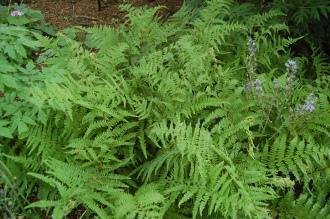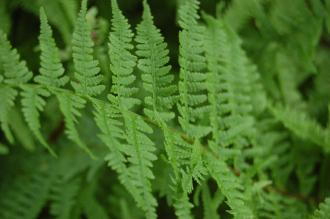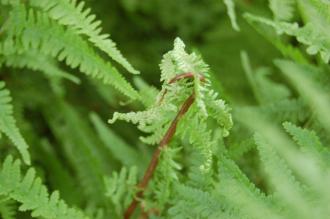
Athyrium filix-femina (22/05/2016, Kew Gardens, London)
Position: Partial shade to full shade
Flowering period: N/A
Soil: Moist, well drained
Eventual Height: 60cm
Eventual Spread: 60cm
Hardiness: 4a, 4b, 5a, 5b, 6a, 6b, 7a, 7b, 8a, 8b
Family: Athyriaceae
Athyrium filix-femina is a deciduous fern with a clump forming habit. Its mid green leaves are in the form of lance shaped fronds, are 3 pinnate, up to 80cm long, 25cm broad and appear in whorls from its basal rootstock. Its roots are in the form of rhizomes.

Athyrium filix-femina Leaf (22/05/2016, Kew Gardens, London)
Athyrium filix-femina, commonly known as Lady Fern, Common Lady Fern or Female Polypody, is native to the temperate Northern Hemisphere, including the UK. In its native habitat it grows in damp woodlands.
The etymological root of the binomial name Athyrium is derived from the Greek aqurw meaning ‘Sport’. Filix-femina is derived from thee Latin filix meaning ‘fern’ and femina meaning ‘female’.
The landscape architect may find Athyrium filix-femina useful as an attractive foliage plant for shady, damp locations.

Athyrium filix-femina Leaf Tip (22/05/2016, Kew Gardens, London)
Ecologically, Athyrium filix-femina is of little ecological benefit.
The Royal Horticultural Society has given the species Athyrium filix-femina their prestigious Award of Garden Merit in 1993.
Athyrium filix-femina prefers moist, humus rich, well-drained soils. It tolerates most pH of soil and will tolerate very acid soils. It prefers a damp soils.
Athyrium filix-femina requires little maintenance. Large clumps may be divided in spring.

Landscape Architecture

